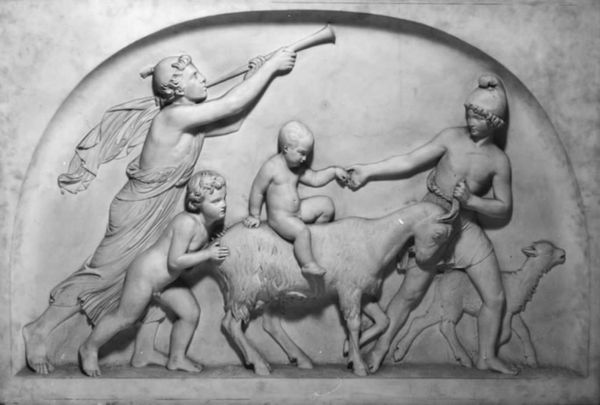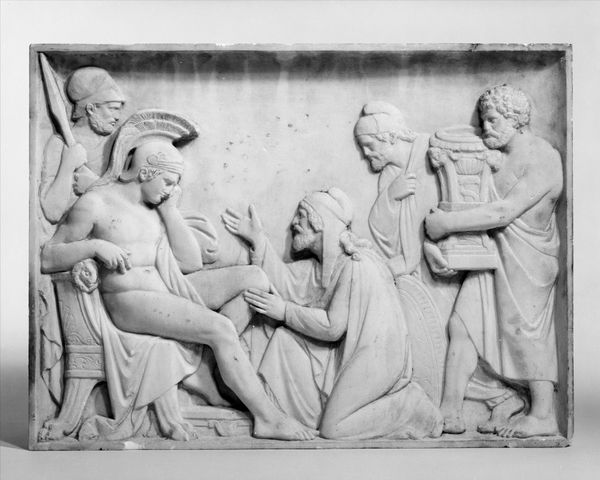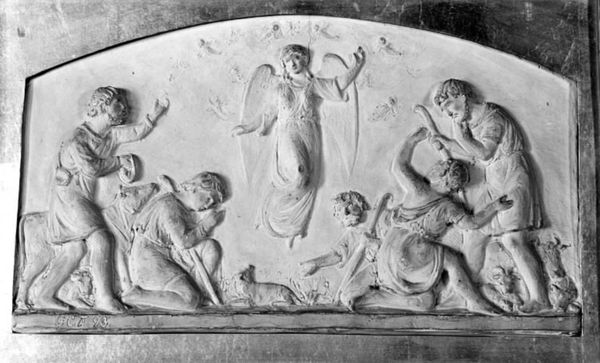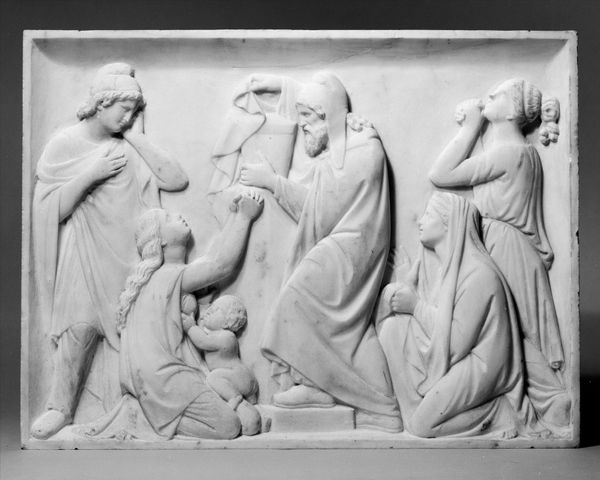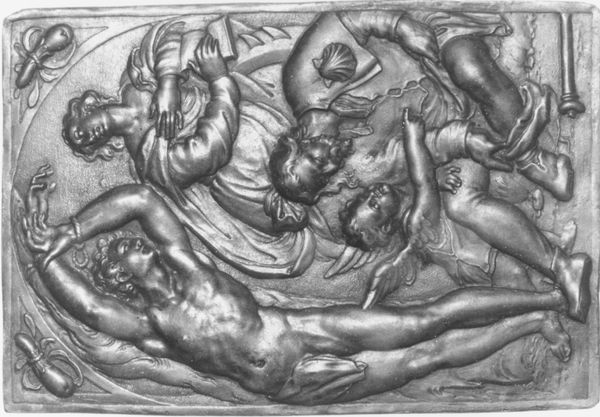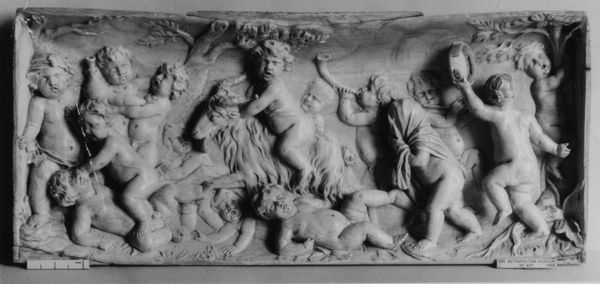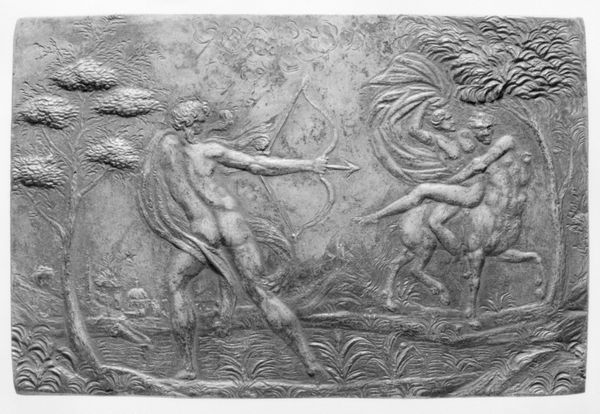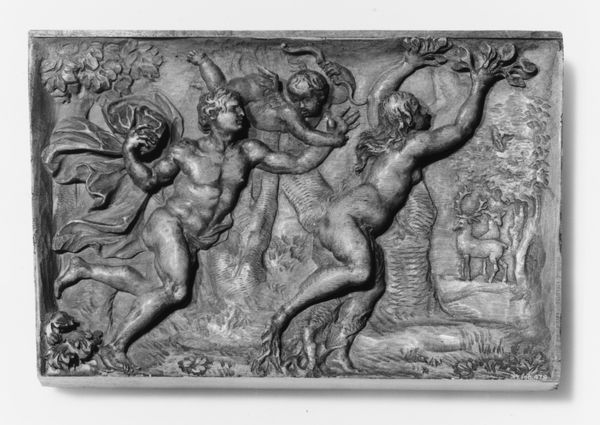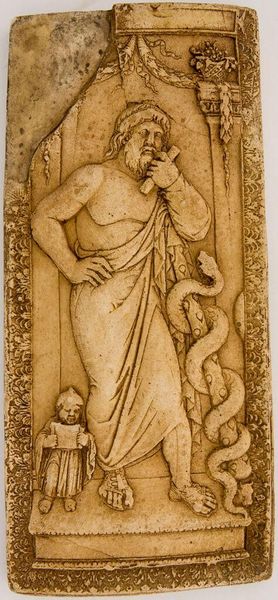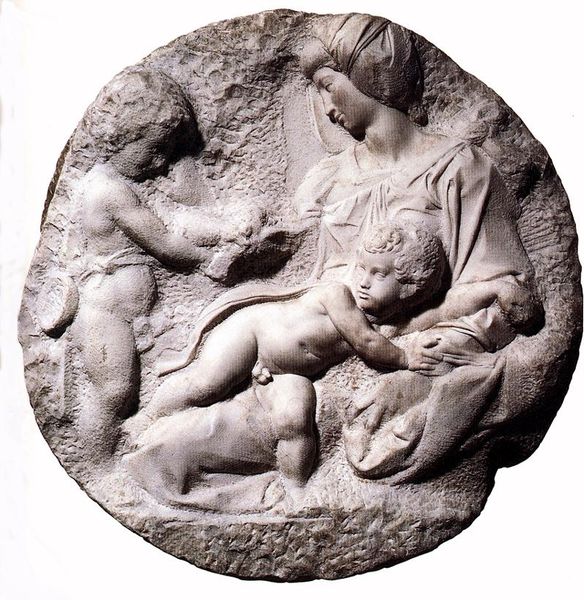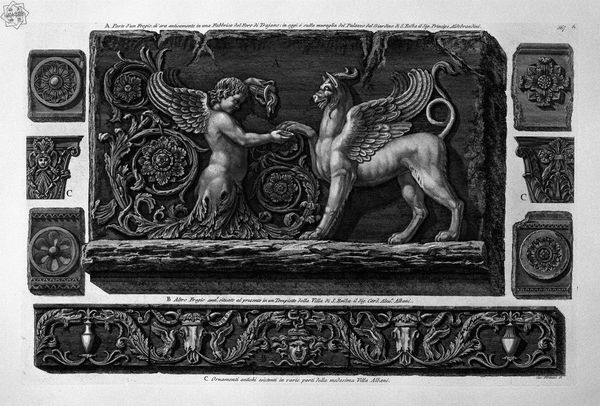
Hyrdescene. Siddende fløjtespillende vinget Amor og stående hyrdedreng, omgivet af geder 1840 - 1844
0:00
0:00
carving, relief, sculpture, marble
#
neoclacissism
#
carving
#
sculpture
#
relief
#
landscape
#
figuration
#
sculpture
#
carved
#
history-painting
#
marble
Dimensions: 48.5 cm (height) x 62.5 cm (width) x 8.5 cm (depth) (Netto)
Curator: What a delightfully serene scene! The marble practically glows. Editor: Indeed! We're looking at a piece entitled "Hyrdescene. Siddende fløjtespillende vinget Amor og stående hyrdedreng, omgivet af geder", created by J.A. Jerichau between 1840 and 1844. Curator: Hyrdescene—"Pastoral Scene"—suits it well. The winged Amor, Cupid himself, playing his flute... and those goats! They immediately evoke a feeling of idealized pastoral life. The carving technique certainly lends itself to this sense of tranquil beauty, very smooth and clean. Editor: Notice how Jerichau is participating in a long artistic conversation referencing classical antiquity, tapping into the cultural memory of idealized rural settings so valued within Neoclassicism. The Cupid, the shepherd, the goats, even the overall composition—it's all deliberately channeling a certain idea. It also signals Denmark's growing investment in artistic narratives on the international stage. Curator: Absolutely! The artist would likely want to situate themselves within the history of art, particularly those interested in history-painting. That interplay is vital for understanding its purpose and reception. But for me, there's an undeniably palpable warmth here; it’s not a stark intellectual statement, rather, one that seeks an immediate emotional response through well-worn symbols. Cupid almost seems bored playing the flute. Editor: Perhaps. The imagery has been repeated and recycled throughout artistic history, after all, losing much of its potency in its repetition throughout various power structures. In its creation, however, artists still want to capture and inspire feelings, of course. Though, its existence and location at the Statens Museum for Kunst also implicates its importance to the rise of Denmark in the mid-nineteenth century, especially during a period where they found themselves between larger European forces. Curator: It is always fascinating to observe the intersection between cultural symbol and state apparatus. I always come back to this point as a cultural product. Editor: A needed perspective, I believe. Thank you.
Comments
No comments
Be the first to comment and join the conversation on the ultimate creative platform.
